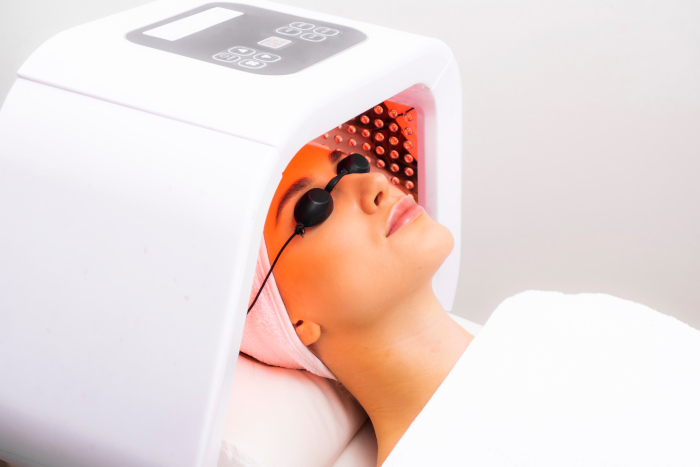PDT ACNE

Photodynamic therapy (PDT) is an effective treatment option for acne, particularly for moderate to severe cases that have not responded well to other treatments. It combines the use of a photosensitizing agent and light therapy to target and destroy acne-causing bacteria, reduce inflammation, and improve overall skin health. Here is a description of photodynamic therapy for acne:
Consultation: The process begins with a consultation. During this consultation, we will assess your acne, discuss your treatment history, and determine if PDT is the appropriate option.
Cleansing and Preparation: The treatment area, usually the face, is cleansed thoroughly to remove any dirt, oil, or makeup. This ensures that the photosensitizing agent can penetrate the skin effectively.
Application of Photosensitizing Agent: A photosensitizing agent, often a topical solution or gel containing aminolevulinic acid (ALA) or methyl aminolevulinate (MAL), is applied to the skin. The agent is left on the skin for a specific period, typically around 30 minutes to an hour, to allow it to be absorbed by the acne-causing bacteria and sebaceous glands.
Activation of Photosensitizing Agent: After the incubation period, the targeted area is exposed to a specific wavelength of light, typically using a specialized light source such as LED or laser. The light activates the photosensitizing agent, causing a reaction that generates oxygen radicals. These radicals destroy the acne-causing bacteria, reduce inflammation, and help control excess oil production.
Light Therapy Session: During the light therapy session, the patient may wear protective eyewear to shield their eyes from the light. The duration of the session depends on the specific protocol and the patient’s individual needs.
Recovery and Post-Treatment Care: After the photodynamic therapy session, the patient may experience temporary redness, swelling, and sensitivity in the treated area. These effects usually subside within a few days to a week. The skincare professional will provide specific post-treatment care instructions, which may include avoiding sun exposure, applying soothing creams or moisturizers, and using gentle skincare products.
The number of photodynamic therapy sessions required for acne treatment can vary depending on the severity of the acne and the individual’s response to treatment. Typically, multiple sessions are recommended, spaced several weeks apart. PDT can be combined with other acne treatments, such as topical medications or oral antibiotics, to enhance the overall effectiveness.
It’s important to note that photodynamic therapy for acne should only be performed in a healthcare setting experienced in this procedure. The specific details and protocols may vary based on the equipment and photosensitizing agents used.
As experts in the treatment of acne, we invite patients from Chapel Hill, Carrboro, Hillsborough, Pittsboro, Mebane, Durham, Burlington, Cary, and surrounding cities, to schedule a consultation for facial rejuvenation with us today. Call us today, or self-schedule here, to discuss your skin concerns, cosmetic goals, and determine if photodynamic facial rejuvenation is suitable for you. Unlock your true beauty and embrace a renewed sense of confidence at the Trillium Clinic. Our team of experienced professionals is dedicated to helping you discover your best self. Embark on your journey to radiant skin today!

